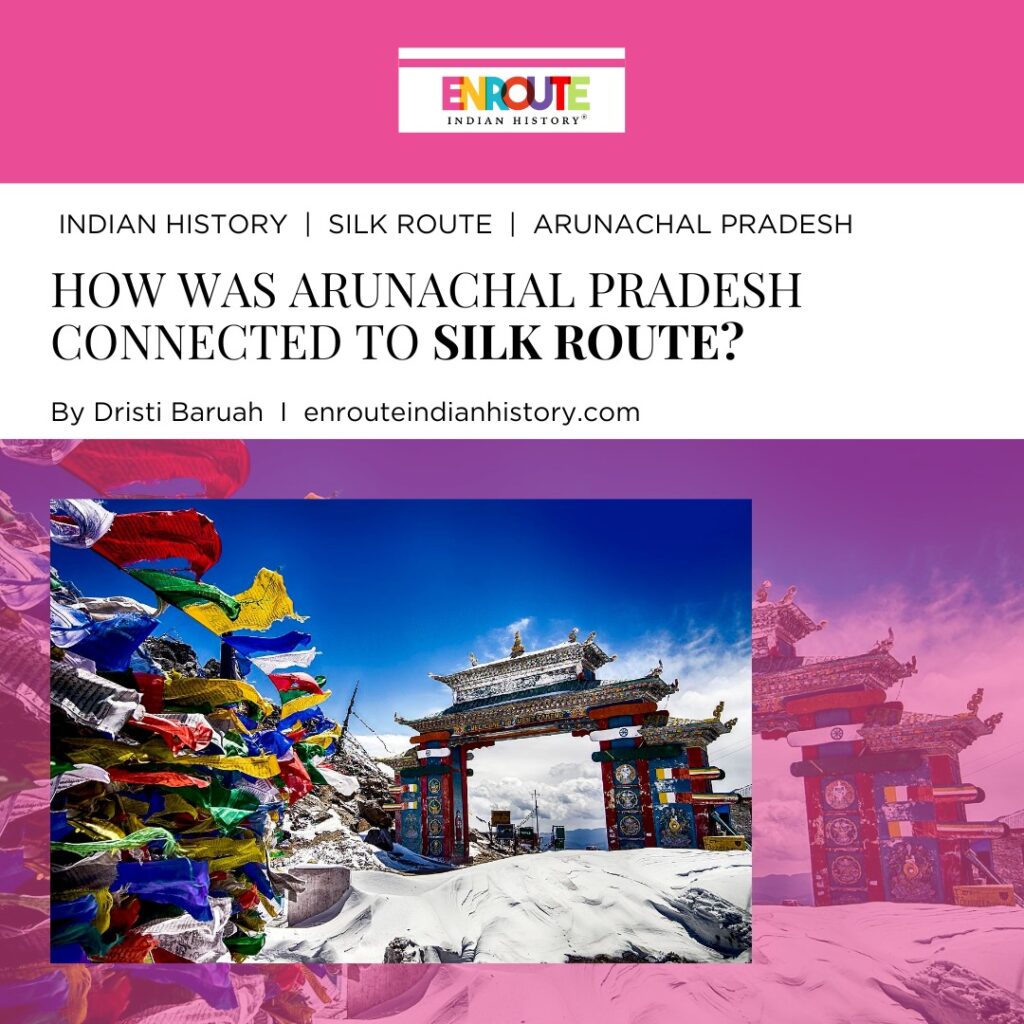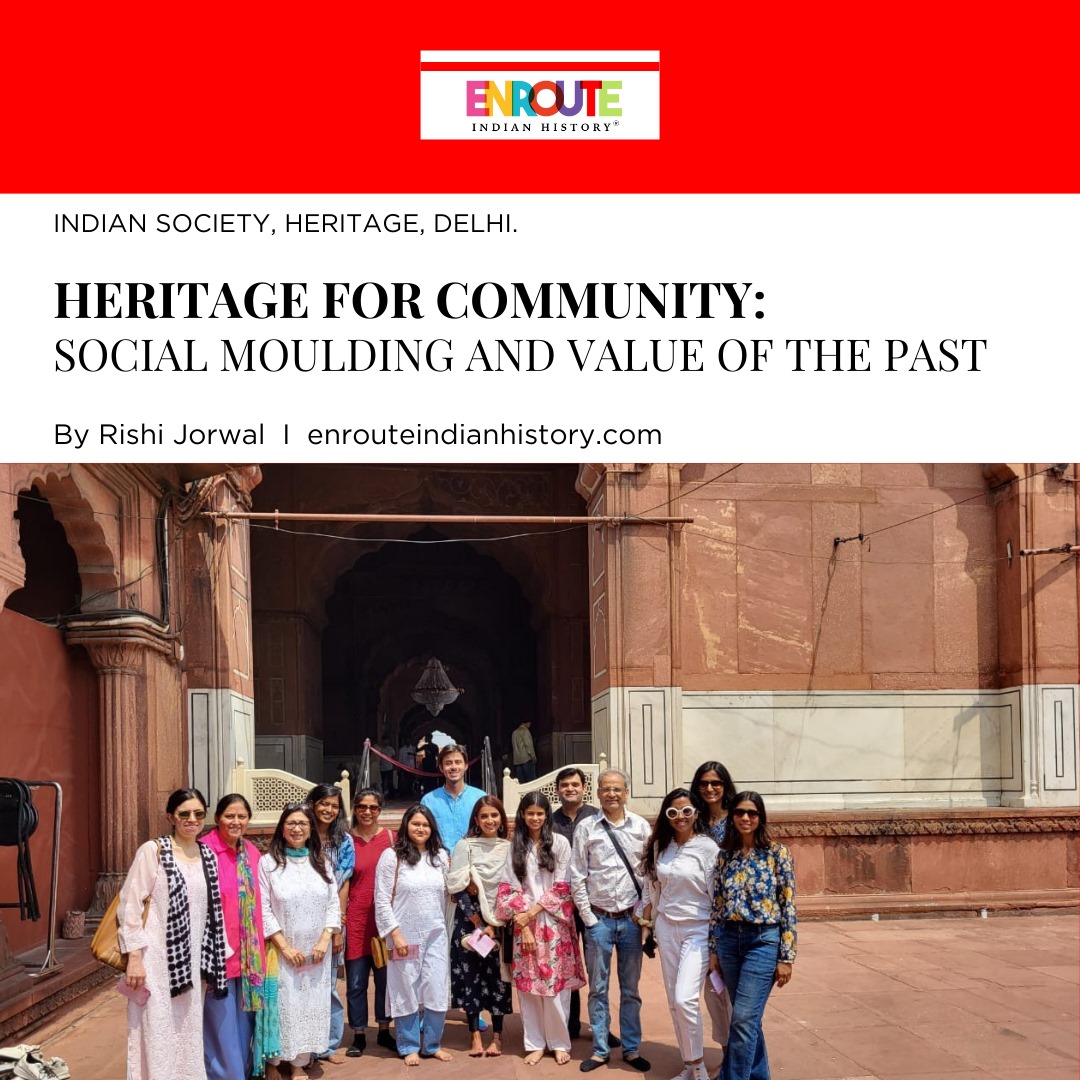
Historical records describe Arunachal Pradesh, in northeastern India, as a mysterious and culturally diverse place. The history of Arunachal Pradesh is intricately woven together by the historical trade routes, cross-cultural interactions, and cohabitation of many ethnic groups.
Arunachal Pradesh’s pre-modern past is marked by the existence of indigenous tribes and villages, each with unique customs, dialects, and social structures. Numerous chieftaincies and kingdoms rose and fell in the area, resulting in a complicated sociopolitical landscape.

Ornate beautiful gate at Sela Pass, Tawang, Arunachal Pradesh
Arunachal Pradesh had flourishing religious and cultural activities following the advent of Buddhism and later Hinduism. The terrain is dotted with monasteries and holy places that represent the harmonious fusion of native beliefs and outside influences.
However what a lot of people do not know about this already elusive region is that during a brief period in history it also served as a trade link between India, China, Tibet and Southeast Asia with an ancient Silk Route passing through its interesting but difficult terrain.
Before we delve into this topic deeply, first we must understand some things about the study of the Silk Route. The Silk Route has captivated the interest of European explorers since the nineteenth century. The commonly agreed upon path of China trade connects it to West and Central Asia, East Africa and Southern Europe. Subsequent extensions of the path including the ‘Tea-Horse’ route between Yunnan and Tibet have also been found.
There has also been substantial discussion about a southwest land and sea route into Bengal that passes through Burma and Assam. The discussion of these routes has included the Himalayan transitional zone east of Burma and south of the Tibetan Plateau. Northeastern India was also vital to the development of this antiquated system of trade channels. The intricate network of routes also linked northeastern India to Tibet, Southeast Asia, and other parts of the world, promoting intellectual, commercial, and cultural connections.
But the discussion on the Silk Route connections is a gift of colonial fascination with the “difference” of northeast Indian people and their attempts to trace its history. The colonial rulers’ curiosity about the origins of the Brahmaputra and the discovery of an overland passage across the Himalayas to China was piqued after seizing control of Assam in 1826. According to John McCosh (who was a Scottish army surgeon who made documentary photographs whilst serving in India and Burma) for example, Assam’s land is located practically immediately between the empires of China and Ava (Myanmar), with a small belt of rugged terrain holding and barbaric tribes of independent savages between them.

The mountainous terrain of the Bumla Pass on the India-China border of Arunachal Pradesh shows us the extreme difficulties to be endured while navigating the area to reach either side
The idea that trade could develop over the Extended Eastern Himalayas was spurred by speculative assumptions about the region’s topography, accessibility, and proximity to China. Even in the post-colonial era, scholars have drawn inspiration from the claims made by the early colonial administrator-ethnographers. As a result, they also discovered efficient overland routes via the Himalayas that allowed goods to be imported from China via Tibet. This has found a place in a number of works about the region.
Richard Wilcox (he and James Burlton were pioneers of exploring Assam and the Brahmaputra valley during 1825-1828), for example, notes that inside the Adi Abors (tribe). He discovered a small number of Tibetan-made items that had been traded with tribes further east, despite the fact that they were unaware of any northern countries. The Miris (tribe) traded manjit, ginger, pepper, madder, and wax with the lowlanders. The wealthy Adis, on the other hand, owned Tibetan rock salt, big blue beaded necklaces, and woolen clothing. He said the Mishmis (tribe) were skilled silversmiths and minor tradesmen who engaged in a lot of iron smelting.
John McCosh groups the Adis and Mishmis together, saying they traded some copper vessels, ivory, and musk-deer hides that they brought from the north. In addition, they traded glass beads and cattle for food in exchange for large amounts of botanical poison that was used to poison arrowheads.




Tribal attires of the tribes Shertukpen (top ), Mishmis ( middle 2nd ), Monpas (bottom 3rd ), Khamtis (last 4th ) from Arunachal Pradesh
The Khamtis (tribe) of Suddyah, or more appropriately now Sadiya, were involved in the network of exchanges as early as 1836, in which gold, silver, amber, musk, and ivory. Lieutenant E. A. Rowlatt of the 21st regiment N.I. (in a letter to Major F. Jenkins, Governor General’s Agent, N. E. Frontier, dated Saikwah, 1st January 1845) writes Khampti dao, Bisa poison, and dyes, Mishmi tita and manjit were also traded.
Thomas Thornville Cooper (he was an English traveller in China, and later a political agent in Burma) according to what he knows about Miju Mishmis, they traded beads, iron pans, and brass-headed pipes for Mishmi teeta with the Chinese. Additionally, he documents that the traders from Upper Khamtis crossed the Patkai split and exchanged their highly prized daos for slaves with the Mishmees, as well as with numerous other tribes in Assam’s north.

Coptis Teeta, the Teeta used by Mishmis, was apparently a popular trade material and als customary use item among Arunachal Pradesh’s indigenous people for a number of health issues, including stomach discomfort, diarrhoea prevention, and fever reduction
In his capacity as the Assistant Political Officer of the Frontier Tracts, J. F. Needham promoted the well-known goods that the Mishmis exchanged in the Zayul Valley. In addition, the Tibetans gave salt, cattle, silver amulets, ammunition, and forest products like dyes, animal skins, fabric, and money obtained from Assam.
During his voyage between Southwest Tibet and Assam, Noel Williamson captured Tibetans trading Chinese opium for Mishmi teeta. During his tour between southwest Tibet and Assam, Noel Williamson captured Tibetans trading Chinese opium for Mishmi teeta. During his exploration of Southeast Tibet in 1921, Morshead noted that only the semi-savage tribesmen from the southern Himalayan slopes who come up to deal in salt in the winter utilise the route below Migyitun.
But there have been controversies against this claim as well. The incomplete information about trading between a few men in colonial positions and ethnic communities does not in any way suggest that the extended Himalayas are a hub for extensive trade. After all, volumes were modest within each person’s permitted carrying capacity. By the early decades of the twentieth century, the optimistic promises of early ethnographers about how easy it was to travel over the Himalayas had changed. An insight into the significant challenges the landscape faced was provided by cartography. It also changed the idea of a possible continuous caravan route.
But recent studies from non-historical fields of academic studies have added more information on the involvement of social groups in Arunachal Pradesh and their history as related to trading with China. The importance of the Monpas, for example, to trade in pre-colonial and colonial Arunachal Pradesh has been noted by AK Thakur. They were crucial as middlemen in the trade between Tibet and Assam. Produce such as vegetables, husked rice, hand-made paper, dyes, and chilies were exchanged for Tibetan wool, salt, and chappies. Masks, animal hides, chiles, and other items of value were traded by the Monpas for Tibetan rock salt, wool, woollen textiles, and Tibetan dao, which resembled swords. Along with cows, Assamese endicloths, mithun, and animal pelts, the Monpas of Arunachal also trade butter, coats, shoes, carpets, blankets, masks, yak caps, salt, and betel nuts with the Sherdukpen tribal community.

Signature glass blue white beads from Arunachal may have been a prominent trade commodity
According to Stuart Blackburn the intricate trans-Himalayan commerce, which was mostly carried out through trade fairs (duars, or “doors”) starting at least in the early 1600s, included much more than just the bead trade in northeastern India. Arunachal tribesmen served as intermediaries and porters for Tibetan, Bhutanese, and Indian traders who traveled to these yearly trade fairs, which the Ahom rulers had set up at several locations in the Assamese lowlands near the hills.
Bin Yang said that the SSR or the Southern Silk Route had both a marine and an overland route, the latter traveling via Assam, Yunnan, and Upper Burma before arriving in India. To illustrate the extensive networks that this route covered, he follows the history of three commodities: cowries, horses, and silver.
But even if the SSR’s history dates back to the second century BCE, there is a lack of specific information regarding the routes and volume of interaction, particularly when it comes to the Northeast and the entire period since then.
All three of these commodities’ movements however undoubtedly had an impact on the Northeast though. For example, J.P. Mills observed that the Mishmis (in modern-day Arunachal) frequently wore silver jewelry, which he claimed was crafted from Yunnan silver coins.
Academic considerations of absolute precision do not mean they have impacted the way the state views its history. In recent years, efforts have been made to revive and promote the Silk Route in Arunachal Pradesh as a cultural and tourism destination. This initiative aims to showcase the historical significance of the region and attract tourists interested in exploring the ancient trade routes, experiencing the local culture, and appreciating the natural beauty of the landscapes along the way.
A more definitive proof of connection with China however is the Ledo Road, also known as the Stilwell Road, is a historic military supply road that played a crucial role during World War II, connecting India with China through the rugged terrains of northeastern India and northern Myanmar. The road was named after General Joseph W. Stilwell, the Allied commander in the China-Burma-India (CBI) Theater during the war. While the major portion of Ledo Road passed through Assam and northern Myanmar (Burma), certain sections entered Arunachal Pradesh, making it an integral part of the historic transportation corridor. The Ledo Road played a crucial role in facilitating the movement of troops and supplies to the front lines in China during World War II. Arunachal Pradesh, with its strategic location, became a vital part of this supply chain.
The influence of China on Arunachal Pradesh is largely characterized by the complex dynamics of territorial disputes, diplomatic negotiations, and regional power struggles. While efforts have been made to maintain stability and prevent escalations, the unresolved border issues continue to be a point of concern in the broader context of India-China relations.
It’s important to note that Arunachal Pradesh is an integral part of India, and the Indian government has consistently rejected any external interference or claims on its territory. The region has its own unique cultural identity, with diverse ethnic communities contributing to the rich tapestry of Indian culture.
References
- Sinha, A. C. (2005). Arunachal Pradesh. Chiba: Institute of Developing Economies.
- Hilaly, S. (2017). Re-Examining the South-Western Silk Road in the Context of Arunachal Pradesh.
- Blackburn, S. (2003). Memories of migration: Notes on legends and beads in Arunachal Pradesh, India. European Bulletin of Himalayan Research, 25(26), 15-60.
- Pachuau, J. L. 5 ‘Circulations’ along the Indo-Burma Borderlands. Flows and Frictions in Trans-Himalayan Spaces, 105.
- Ghosh, L. (Ed.). (2019). The Southern Silk Route: Historical Links and Contemporary Convergences. Routledge.
Image source
- Wikipedia (credited to Dhrubazaan Photography)
- Outlook India
- Discover East
- Ayushvdea.com
- India Mart
- and Kingdoms
- Arunachal Pradesh
- Chieftaincies
- Colonial Ethnography
- Cultural Exchanges
- Diplomatic Negotiations
- Ethnic Communities
- Himalayan Terrain
- India-China Relations
- Indian Culture
- Indigenous Tribes
- Monpas Ledo Road
- Northeast India
- Silk Road
- Territorial Disputes
- Territorial Dynamics
- Tourism
- Trade Fairs
- Trade Routes
- World War II
- April 18, 2024
- 22 Min Read
- April 18, 2024
- 5 Min Read
- April 3, 2024
- 10 Min Read


























